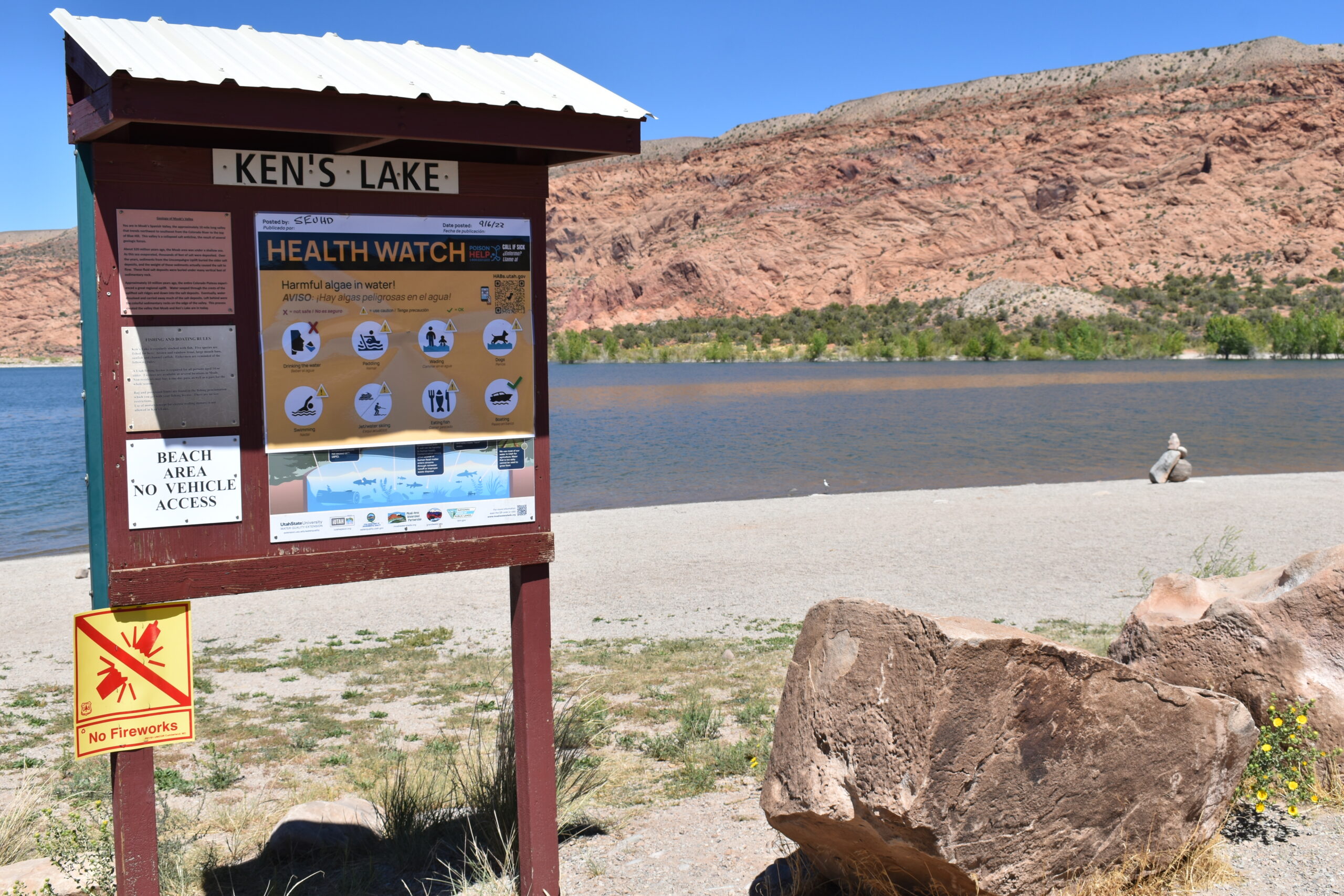Some information may be outdated.
Weeks of testing show algae presence dwindle to nothing

On Sept. 29, health officials lifted a health watch that had been in effect since Sept. 6 at Ken’s Lake. The watch was prompted when concerned citizens alerted the local health department of suspicious algae in the popular reservoir. Tests confirmed the presence of a type of cyanobacteria that is known to sometimes produce toxins—though toxins were not found to be present in any of the samples tested. Regular tests throughout September indicated that the cyanobacteria population was shrinking; by the end of the month, there was no longer any visible growth.
“Continued sampling of the lake will be performed as needed for the safety of our community,” reads a Sept. 29 statement from the Southeast Utah Health and San Juan Public Health departments. “Those visiting Ken’s Lake should continue to watch for signs of the algal bloom reemerging. If you do see signs of an algal bloom, please report your findings at habs.utah.gov.”
The website (Habs.Utah.Gov) also has information about how to recognize a harmful algal bloom, along with example photos—it can look like pea soup, like a blue or green paint spill, like grass, or form in various other appearances. There will also be signs installed permanently at Ken’s Lake with information on how to identify a harmful algal bloom.
Harmful algal blooms are rapid growths of tiny aquatic organisms (cyanobacteria) that can have negative effects on waterbodies, wildlife and people. The growths may disrupt ecosystems by blocking sunlight or reducing the dissolved oxygen in a water body; some types may also produce toxins that can cause a variety of symptoms in humans and animals, including skin irritation, gastrointestinal distress, neurological symptoms, and kidney or liver damage.
Such blooms have been increasing in frequency and severity across the globe. They’re not well-understood, but at least two factors are known to be associated with harmful algal blooms: warm temperatures and high nutrient content in a waterbody.
An Oct. 3 press release from the Utah Division of Wildlife warned that 23 waterbodies in the state are still under advisories for harmful algal blooms (none are in Grand or San Juan county). The DWR directed its reminder especially to waterfowl hunters, as many of the general season hunts open this weekend, and sportsmen and women may be getting out on the water. The Division of Water Quality will end its monitoring season on Oct. 31, as colder weather sets in—however, the agency warns that cold weather doesn’t necessarily mean the danger is past.
“HABs can persist throughout the fall and winter, posing a threat to waterfowl hunters and their dogs,” the Division of Water Quality website warns.
Anglers, too, should be aware of any advisories in waterbodies where they harvest fish. Toxins from harmful algal blooms can accumulate in fish, particularly in the organs and fat deposits. Officials recommend carefully cleaning and thoroughly cooking any fish harvested from waterbodies affected by HABs, and that only the filets, rinsed in clean water, be eaten.
SEUHD’s director of environmental health Orion Rogers followed up the initial HAB detection in Ken’s Lake with more testing in the following weeks. Samples were tested both for toxins (which were not detected) and for cell counts of the cyanobacteria—the threshold of concern for cell count is 100,000 per milliliter. The first sample showed a cell count of about 200,000 per milliliter; subsequent tests showed cell counts of about 4,000 and then 2,000 per milliliter, Rogers said. By the end of the month, there was no visible algae to indicate a sample site. A Sept. 29 update on the Division of Water Quality website reads,
“GOOD NEWS: Samples from Ken’s Lake have been below recreational advisory threshold levels for the past two weeks. Harmful algae was not observed this week.”
Appreciate the coverage? Help keep local news alive.
Chip in to support the Moab Sun News.





